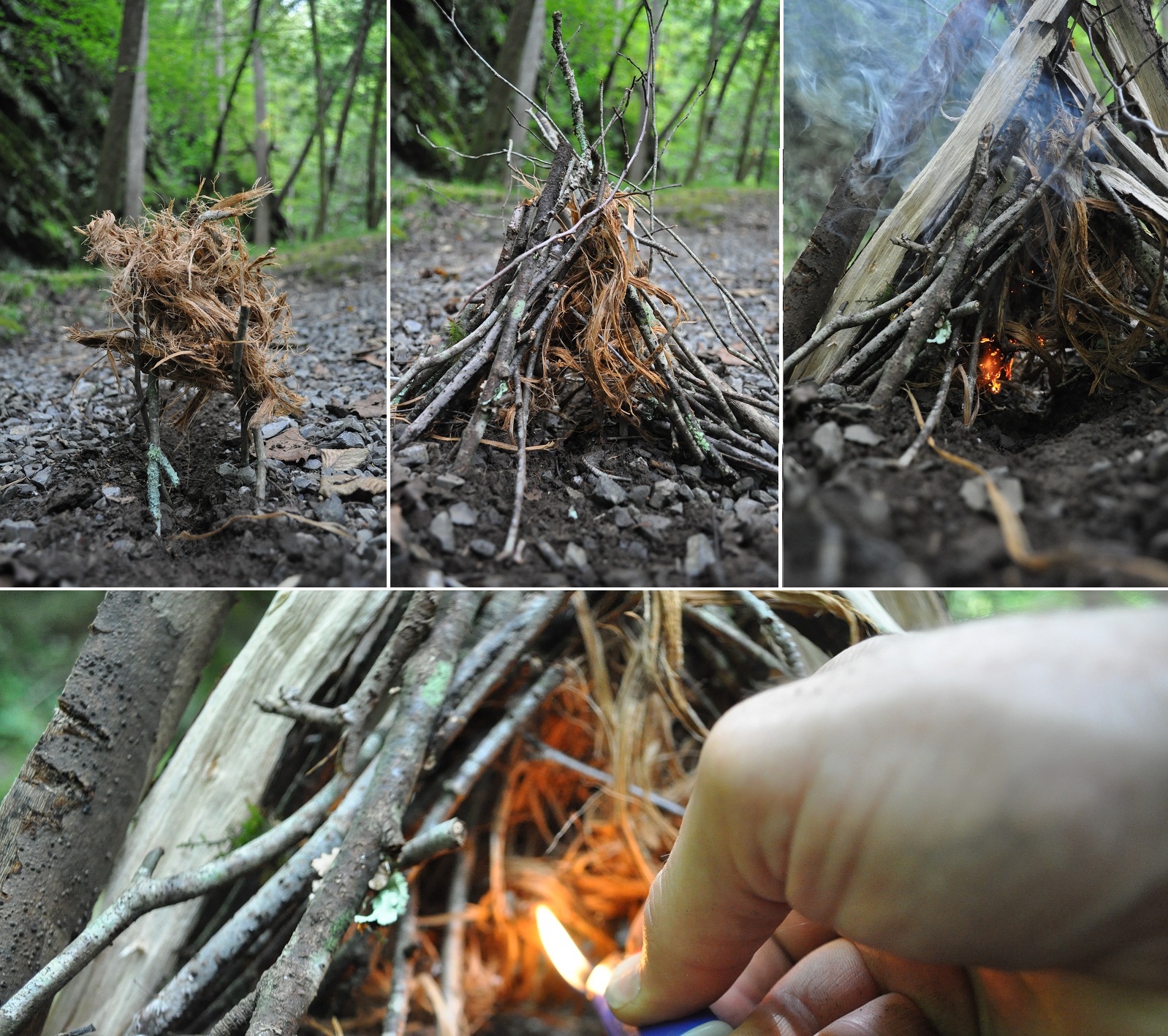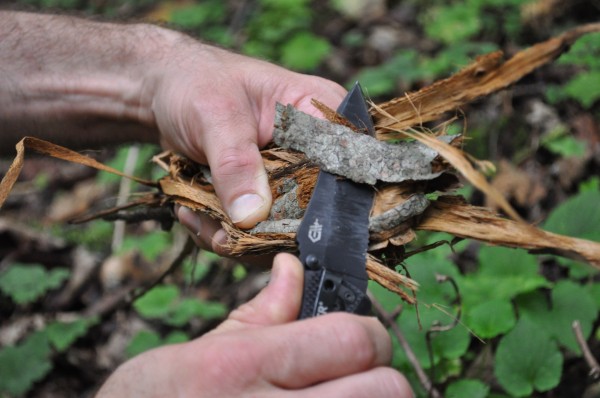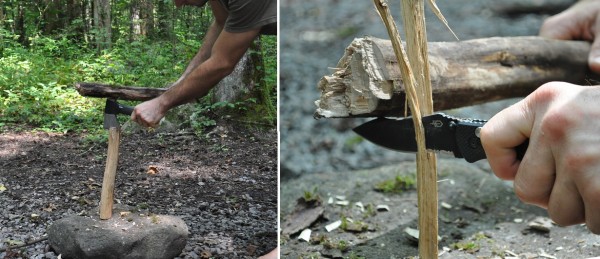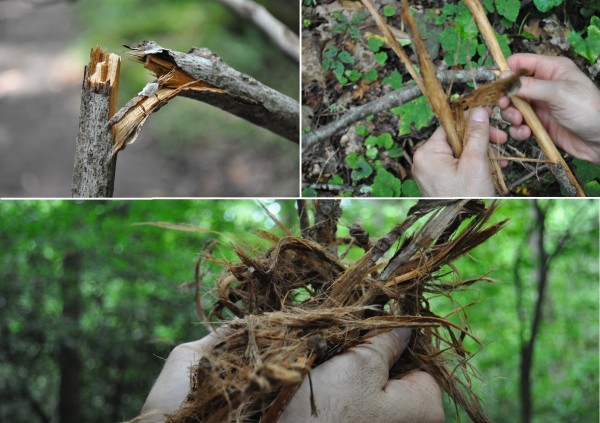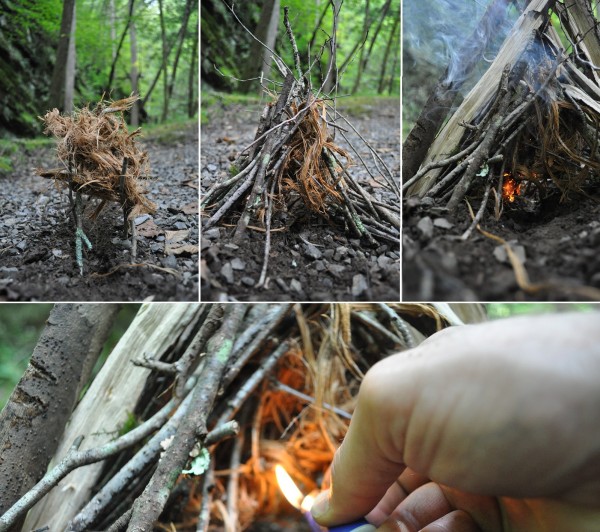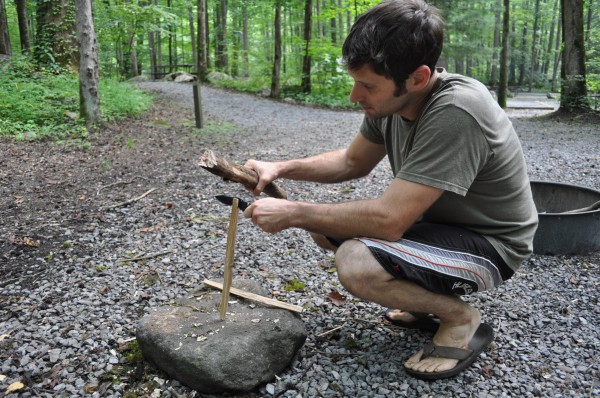
The author showing the “hatchet technique” with a knife and beater stick to split a chunk of leftover firewood into dry kindling. Big Creek, Great Smoky Mountains N.P.
THIS PAST WEEK it rained in the Smokies on and off for several days, including the night before we visited Great Smokies National Park.
